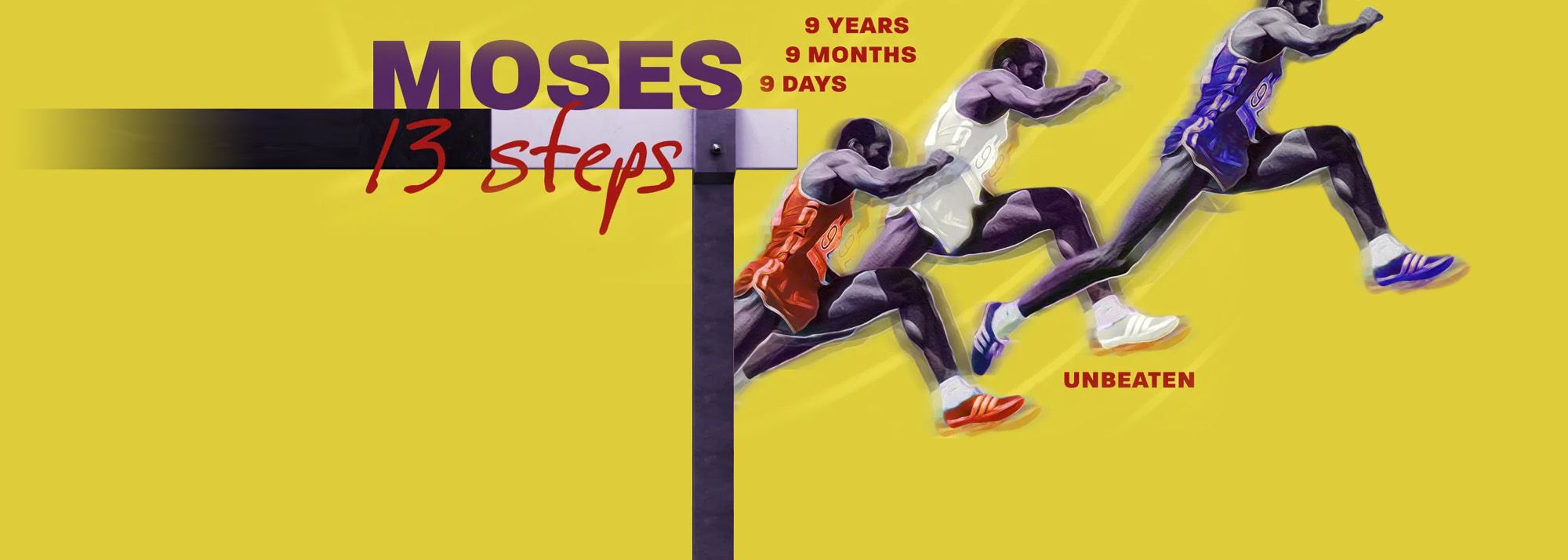Moses 13 Steps
The title of a new documentary about athletics icon Edwin Moses – ‘Moses - 13 Steps’ – is inspired, fittingly, by Hitchcock’s 1935 classic ‘The 39 Steps’, in which a man unravels a mystery.
In Michael Wech’s film, the enigma extends beyond Moses’ mastery of the 400m hurdles, where he famously solved the puzzle by running it with his giant strides, using only 13 steps between barriers.
The documentary reveals a champion whose undefeated streak spanned a decade, but whose legacy endures even more powerfully through his advocacy for fairness, equity, athletes' rights, anti-doping and social justice.
The maths between the hurdles
In 1976, Moses, a physics major from Atlanta’s Morehouse College, became the first athlete to consistently maintain a 13-step stride pattern between the 10 hurdles of the race, which became his technical signature.
Reducing the number of steps was a trend during the 20th century. 1952 Olympic champion Charles Moore pioneered the 13-step plan, but only to the fifth hurdle. Moses fulfilled the ambition of another former world record-holder, Soviet Yuriy Lituyev, who had attempted 13 steps all the way in the semifinals of the 1954 European Championships but only managed it to the penultimate hurdle and injured his hamstring in the process.
That was in the cinder track era, but with bouncier synthetic surfaces becoming standard, the 13-step approach for five or six hurdles became common in the 1970s, until the tall (1.87m) and long-legged (94cm) Moses succeeded in applying the 13-step plan throughout.
The benefit was that Moses didn’t need to alternate his lead leg. The drawback was that this plan didn’t account for the inevitable reduction in step length as fatigue set in, posing a tricky equation for the physicist: how to fit his natural 2.70m stride – which shrinks to 2.30m as he tires – into a consistent 2.40m length between the 10 hurdles of the lap, as required by the 13-step plan?
Although Moses stated that a 12-stride plan – one that would match his normal step length but require switching legs at each hurdle – might be needed to break 47 or even 46 seconds, he never implemented it in competition. At a race in Zurich in 1981, however, he had to take 12 steps over two intervals to avoid falling. But why change when your winning margin is more than a second on average?

US 400m hurdler Edwin Moses (© Getty Images )
The self-coached hurdler’s last defeat was in 1977 against West-German Harald Schmid, when Moses tripped before the 10th hurdle. “My mistake, I won’t do it again,” he then declared, and kept his word until 1987, when he stumbled over the same obstacle trying to catch Danny Harris.
This period of invincibility – 122 consecutive victories over nine years, nine months and nine days –remains the longest streak in track and field history, and included two Olympic titles, two World Championships, three World Cups, and four world records. His last one, 47.02 set in 1983, stood for nine years until Kevin Young broke it with 46.78, using – as Moses prophesised – a 12-step rhythm.
The man beyond the obstacles
Upon retiring after the 1988 Olympics, where he earned the bronze medal, Moses closed a career unparalleled with 178 victories in 187 races since his debut in 1975.
But the film ‘Moses - 13 Steps’ goes beyond the 400m hurdles. The ‘Prophet of the 400m hurdles’, as he was nicknamed by French journalist Robert Parienté, shares how he made an impact off the track as well, "guided by principles of fairness and equity".
Moses campaigned to allow athletes to become professionals in a transitional amateur era, contributed to anti-doping policies including random and out-of-competition testing programmes, and took a stand against apartheid in South Africa.
With his recognisable style wearing large dark glasses and rawhide cord necklace, his influence made him an iconic African American sports figure, and he was duly chosen to deliver the Athlete’s Oath at the opening ceremony of the 1984 Los Angeles Olympics. In 1981 he was the first recipient of USA Track & Field's Jesse Owens Award as the outstanding US track and field performer for 1981. In 2018, he received the Laureus Lifetime Achievement Award.
German director Michael Wech, known for his profiles on Snoop Dogg and King Charles, brings together three Academy Award winners in his film: executive producer Morgan Freeman and commentary from Moses’ fellow Morehouse alumni Spike Lee and Samuel L Jackson.
Promotion for the 105-minute film began this summer in connection with the Paris 2024 Olympics and will be presented in New York on 17 November, as part of the DOC NYC, a festival that celebrates documentary filmmaking by connecting artists and audiences through powerful stories and diverse voices.
Pierre-Jean Vazel for World Athletics Heritage





